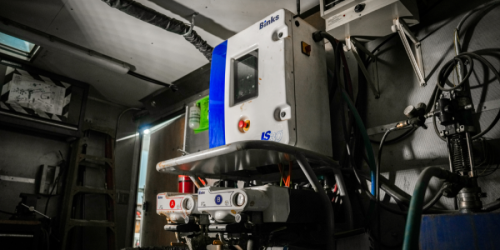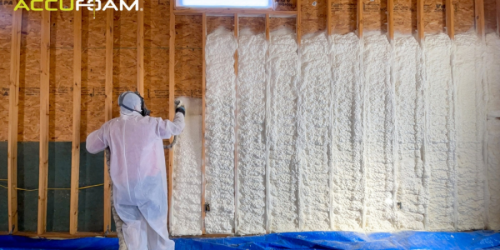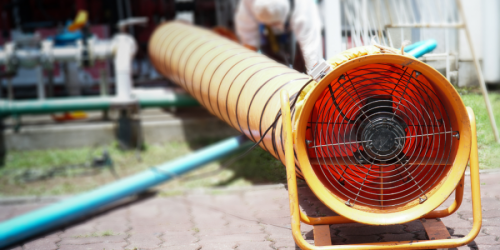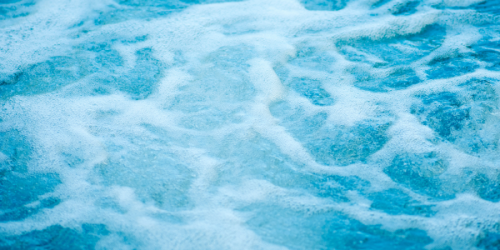Q&A Forums
How much foam and fire ratings Post New Topic | Post Reply
| Author | Comments |
|---|---|
|
Posted: Jan 08, 2009 05:50 PM
|
How much foam and fire ratings
I’m an energy consultant in central Maryland. Most of my work is in the controls area, but I’m working on a project that involves spray foam insulation. Our project is to build a low cost work shop, that is as energy efficient as possible. The building is a 24’ by 40’ pole barn with 29 gauge metal siding and a 4/12 29 gauge metal roof. The floor will be a 4” fiber concrete with ½” pex tubing for radiant heat and 2” of foam board insulation. The plan is to spray the the entire interior with 2” of high density foam for air control and insulation. Air quality will be handled with a HRV. The target winter heated temperature is 55 deg F and the building is in central Maryland. My questions are, will 2’ of foam be enough to keep condensation at bay, and will foam with a class 1 fire rating need to be covered up? The vertical walls of the building will be covered, but not the lid, if possible. Thanks in advance, Ron Camerata Energy Management & Control Mount Airy, Maryland |
|
Roger Morrison
Posted: Jan 09, 2009 06:20 AM
|
Ron: How much insulation you need to prevent condensation depends on mainly two factors: geographic location and interior conditions. You provided the first but only half the second. Assuming that there are no unusual sources of humidity in the building, two inches of ccSPF should be ample to control condensation. If the building is enclosing a swimming pool or soup kitchen, all bets are off. SPF with a Class I fire rating still needs to be covered and/or separated from interior spaces with a THERMAL BARRIER such as 1/2" gypsum board or equal. With the walls, this is fairly straight forward. On the lid, it can be complicated by the exact construction you are using (that is, how you do it depends on whether or not there is a ceiling with an attic space). With no attic, an option would be to spray a thermal barrier rated cellulose to the exposed SPF surface. With an attic, if the ceiling was constructed of thermal barrier gypsum board, then the SPF in the attic would only require an IGNITION BARRIER which could be a tested and approved intumescent coating or the like. Hope this helps. Roger |
|
mason
Posted: Jan 09, 2009 09:04 AM
|
I got it figured out why the posts were not going through. I added a website link to my response and the forum is blocking it. So I will try again. To add to Roger's comment about fire and ignition barriers. A thermal barrier is defined in the building codes as a covering over foam plastic that when tested in a room corner fire test keeps the surface of the foam plastic below 250 degree F for at least 15 minutes. Drywall is listed in the building codes as a thermal barrier as is concrete. Thermal barriers are required in all inhabited areas of buildings over foam plastic. An ignition barrier is allowed over foam plastics in attics and crawl spaces instead of requiring a thermal barrier. Ignition barriers are specifically listed in the codes as the following items: 1&1/2 inches of mineral fiber (fiberglass or rockwool) 1/4 hard board or wood panels 0.16 inch thickness of metal skin or a material (such as some intumescent coatings) that have been approved over the foam plastic based on diversified tests such as the room corner test or the SWRI attic and crawl space test. So long as you use a code prescribed ignition or thermal barrier in the attic or crawl space, and the foam plastic is rated a flame spread of 75 or less and smoke developed 45 or less, it can be used at the thickness it was tested in accordance with ASTM E-84 (Flame and Smoke Steiner tunnel test) without an evaluation report. However, ASTM E 84 typically does not allow testing at thickness greater than 4-5 inches. For greater thickness, the foam must be tested in a room corner test such as NFPA 286, UL 1715, FM 4880, etc. Again, a code official may require an evaluation report or rely on the full scale room corner test results. It is their option. If you want to use an intumescent coating, it must be tested in either a room corner test or another test (such as SWRI-99 02)that is accepted by the ICC Evaluation Services with the specific foam you want to use. I recently asked Michael Beaton (head Staff Engineer at the ICC Evaluation Services if existing Legacy Evaluation Reports are still valid so long as they are on their website. He responded that the Legacy reports are valid for the codes previous to the last date the report was renewed. So for example if the report was reissued in 2003 before the 2003 ICC code book was issued, the report would be valid for the 2000 code but not the 2003 code. A material approved in the fire test would require an ICC Evaluation Service report detailing the specific foam and material allowed and under what specific conditions including, where it can be installed, how thick and other factors. For more information download the SPFA technical document AY 126 Thermal Barriers for the SPF Industry. It can be downloaded for a limited time without charge at sprayfoam.org. Alos check out my RSI article "Foam Plastics and Fire for a history of the E 84 tests and the development of test procedures used on foam You can download the article by looking at my website masonknowles.com under articles and clicking on RSI articles. This is a link taking you to their website and my column. (PS, Roger wrote the draft AY 126 thermal barrier paper for SPFA in the early 90s while a member of the Technical Committee) |
|
mason
Posted: Jan 09, 2009 09:08 AM
|
Roger's comments on 2 inches of closed cell SPF being sufficient under typical indoor climate to prevent condensation is supported by researchers such as Joe Lstiburek, Mark Bomberg, hygrothermal modeling (such as WUFI) and the most current building codes. |
|
Posted: Jan 09, 2009 05:42 PM
|
Thanks all, much needed information! This will keep me busy. This building will be used for a wood and metal working shop. There should be no excessive moisture sources, but lots of flame and sparks. The lid and gables of the building are to remain open to the lower space, so these areas would require a thermal barrier. (I’m beginning to see why so many of the general contactors I’ve talked with are so quick to dismiss SPF.) Adding dry wall to this area will be a real budget crunch. Are there any spray-on products that could provide an acceptable thermal barrier? Ron C |
|
mason
Posted: Jan 15, 2009 08:36 AM
|
Yes, there are a number of spray on thermal barriers available to the sprayfoam contractor. Contact your foam supplier for a list of approved thermal barriers for their foam. |





























